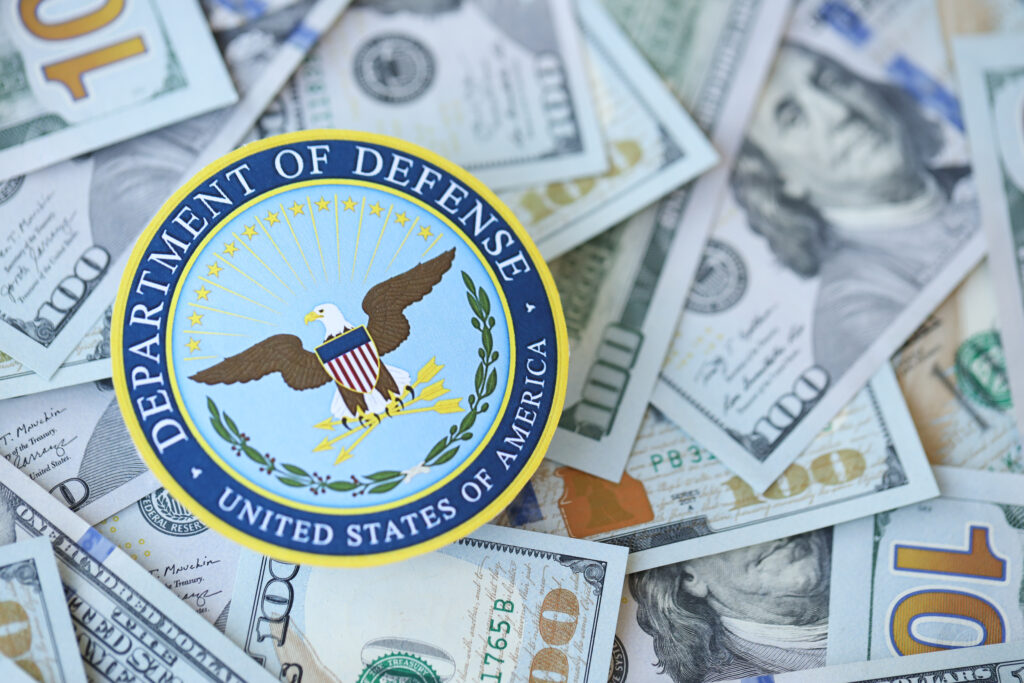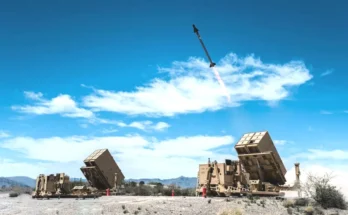
At a press event on Monday with Israeli Prime Minister Benjamin Netanyahu, President Donald Trump hinted at a defense budget request “in the vicinity” of $1 trillion for Fiscal Year 2026. “Nobody has seen anything like it,” Trump said.
Soon after, Defense Secretary Pete Hegseth confirmed the figure in a post on X, adding that the Department of Defense plans to spend “every taxpayer dollar wisely.” But for now, the announcement raises more questions than it answers. Defense spending is complex, composed of overlapping accounts and budget categories, and it’s not entirely clear what the $1 trillion figure includes—or how it compares to current levels.
Thank you Mr. President!
COMING SOON: the first TRILLION dollar @DeptofDefense budget.
President @realDonaldTrump is rebuilding our military — and FAST.
(PS: we intend to spend every taxpayer dollar wisely — on lethality and readiness) pic.twitter.com/WcZlNAHgDG
— Pete Hegseth (@PeteHegseth) April 7, 2025
A Budget with Many Components
To understand the implications of a $1 trillion defense budget, it helps to break down how the federal government accounts for national security spending.
The defense budget falls under Budget Function 050, which includes:
- The Pentagon’s base budget (Subfunction 051)
- Defense-related programs at the Department of Energy (Subfunction 053)
- Other defense activities across federal agencies (Subfunction 054)
Typically, the Pentagon’s 051 budget makes up over 95% of the total 050 amount.
For context, the Biden administration’s FY25 request included:
- $849.8 billion for the Pentagon (051)
- $34 billion for defense activities in the DoE (053)
- $11.5 billion for other defense-related activities (054)
When combined, these figures brought the total 050 national security request for FY25 to $895.2 billion. If you also account for another $26 billion in mandatory defense funding, the total FY25 national security request was roughly $921 billion. Even before any new proposal, U.S. national security spending was already approaching the trillion-dollar mark.
Reading Between the Lines of the $1 Trillion Tease
So what does Trump’s trillion-dollar budget teaser actually signal? Without a formal submission, there are several possible interpretations—each with very different implications.
- Option 1: Maximum Buzz, Minimum Change
If the figure includes both discretionary and mandatory spending across Function 050, the administration could hit $1 trillion with a 5% increase over Biden’s FY26 projection of $950.8 billion. - Option 2: Maximum Impact on the Pentagon
If Trump and Hegseth are referring to a $1 trillion Pentagon-only (051) request, that would be a very different story. Biden’s FY26 projection for 051 was $876.8 billion—a 3.2% increase from the amount requested for FY25. A 051 budget approaching $1 trillion would reflect a much more aggressive build-up, with potentially sweeping implications for military acquisition, force structures, and personnel. Hegseth’s confirmation post did tag the Pentagon’s official account (@DeptofDefense), but that alone doesn’t confirm whether the $1 trillion figure refers specifically to the 051 budget. - Option 3: A Middle-Ground Scenario
It’s also possible the administration is referring to the discretionary-only Function 050 budget, which was already projected to reach $924.2 billion in FY26. With some moderate growth, this number could reasonably be rounded up to “nearly $1 trillion.”
Until a formal request is released, we won’t know which scenario is in play. The administration is expected to submit a “skinny budget” by the end of the month that outlines topline spending priorities but lacks the detailed data and program justification documents that accompany a full budget request. Additional justification materials may not be released until later in the spring.
It’s also unclear what kind of long-term growth the administration envisions for the defense budget. Early in his first term, the president increased military spending rapidly through supplemental funding, but his final budget request of that term projected flat budgets for the Pentagon in the years ahead.
What Else is Going on with Defense Funding?
Context is critical. Congress failed to pass a final FY25 defense appropriations bill, despite Senate efforts to increase the topline by as much as $25 billion. Instead, lawmakers adopted a continuing resolution (CR) through the remainder of FY25 that left the Pentagon with a $3 billion shortfall compared to Biden’s request.
Inside the Pentagon, Defense Secretary Hegseth has directed a sweeping review of spending priorities. Each service has been instructed to cut 8% from its budget, with the goal of redirecting funds toward higher-priority programs. The Army, for example, is exploring potential reductions in end strength as one way to meet the mandate. At the same time, lawmakers are working on a budget reconciliation package that could authorize an additional $100–150 billion in defense funding over the next decade—or roughly $10–15 billion annually.
The Real Budget Fight is Still to Come
For all the buzz, the true size—and impact—of the FY26 defense budget request remains to be seen. Even once the administration submits its proposal, Congress will ultimately decide what gets funded and at what level.
This year’s prolonged appropriations breakdown has made clear just how fractured the budget process has become. While support for increased defense spending spans both parties, the FY26 federal budget is still expected to draw pushback from Democrats focused on protecting domestic programs from anticipated cuts. The coming debate will hinge on how to strike a balance between military investments and critical funding needs at home.
And as always in Washington, a headline-grabbing number is just the beginning of the story.
Shaun's deep-rooted interest in military equipment continues in his role as a senior defense analyst with a focus on the United States. He played an integral role in the development of Forecast International's U.S. Defense Budget Forecast, an interactive online product that tracks Pentagon acquisition programs throughout the congressional budget process. As editor of International Military Markets – North America, Shaun has cultivated a deep understanding of the vast defense markets in the United States and Canada. He is a regular contributor to Forecast International's Defense & Security Monitor blog and has co-authored white papers on global defense spending and various military programs.




